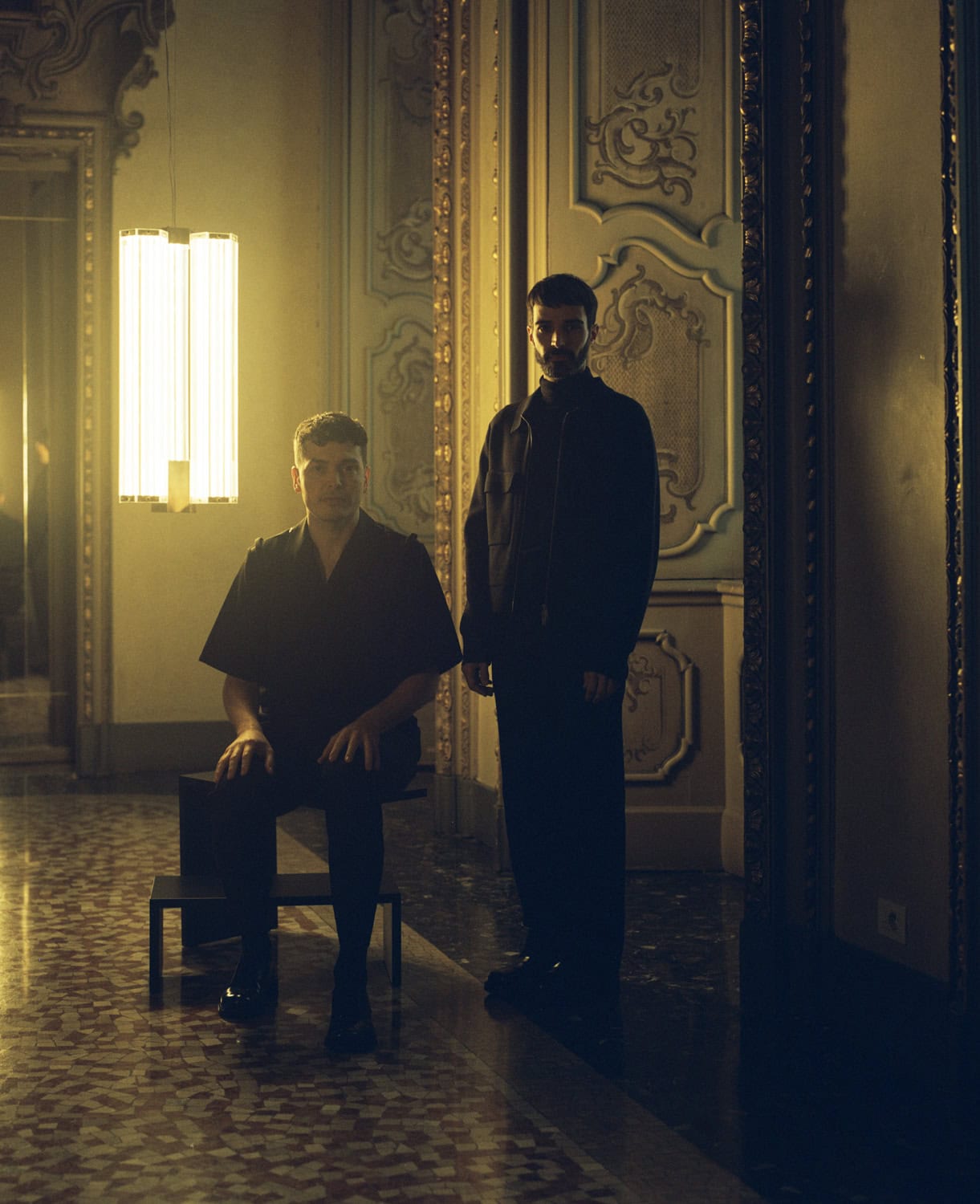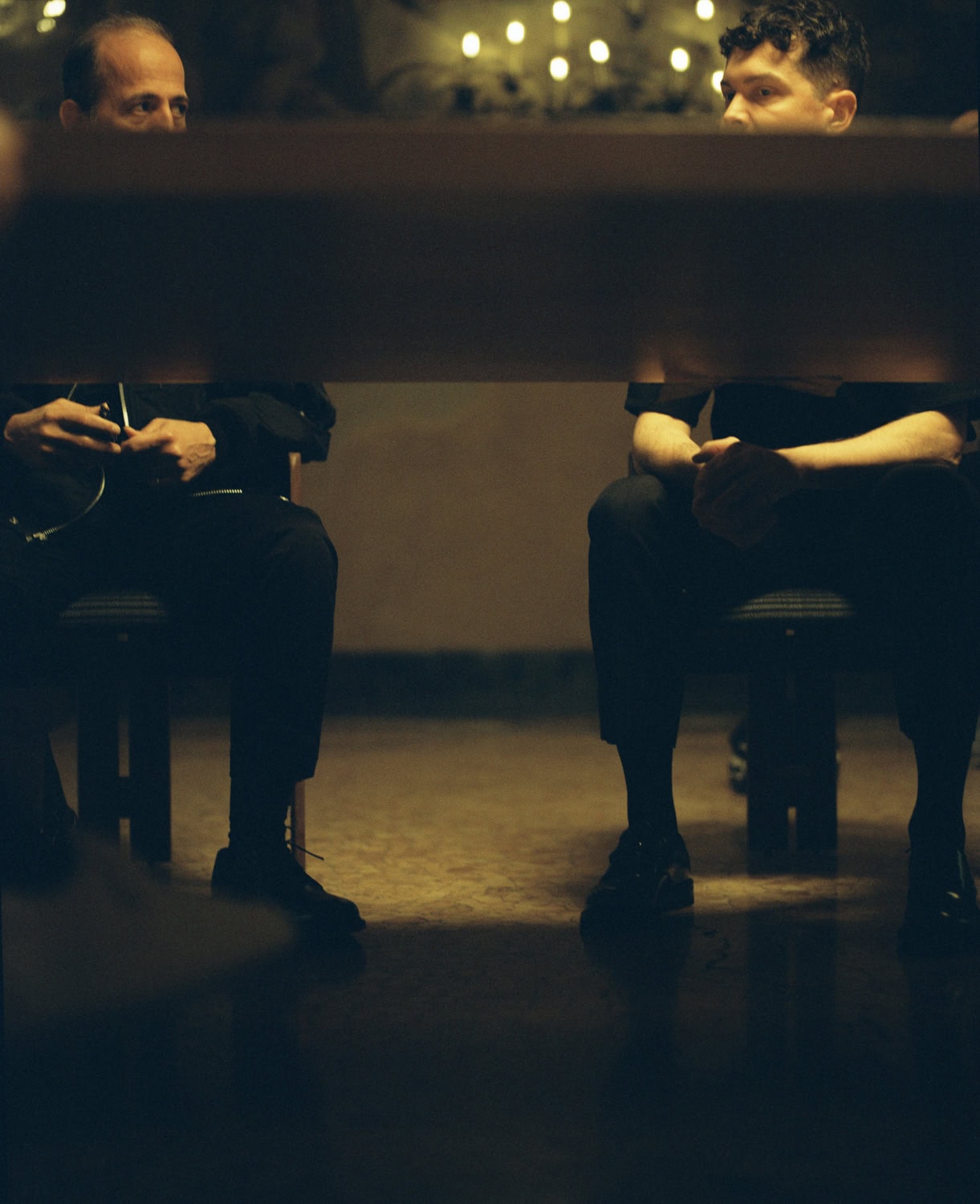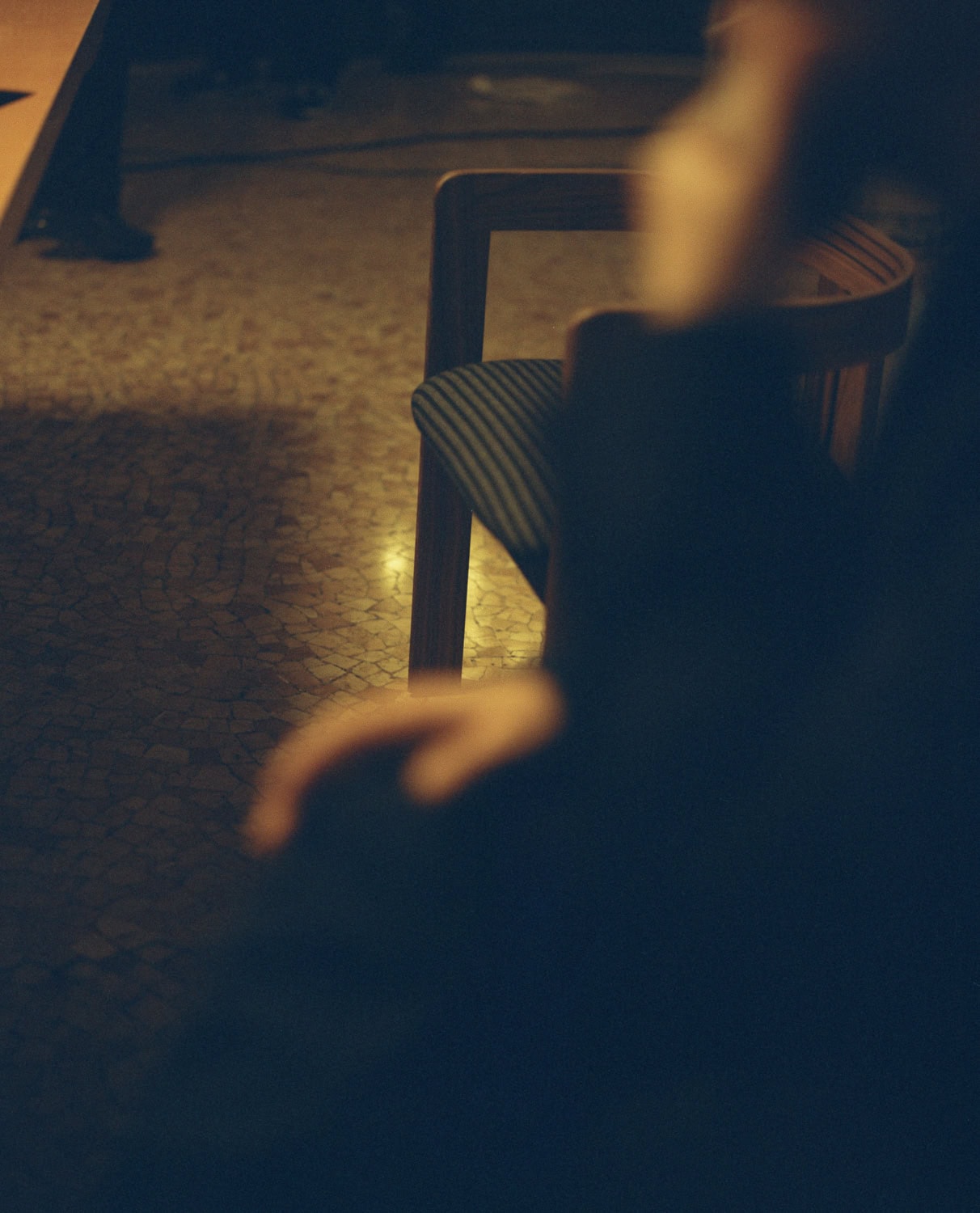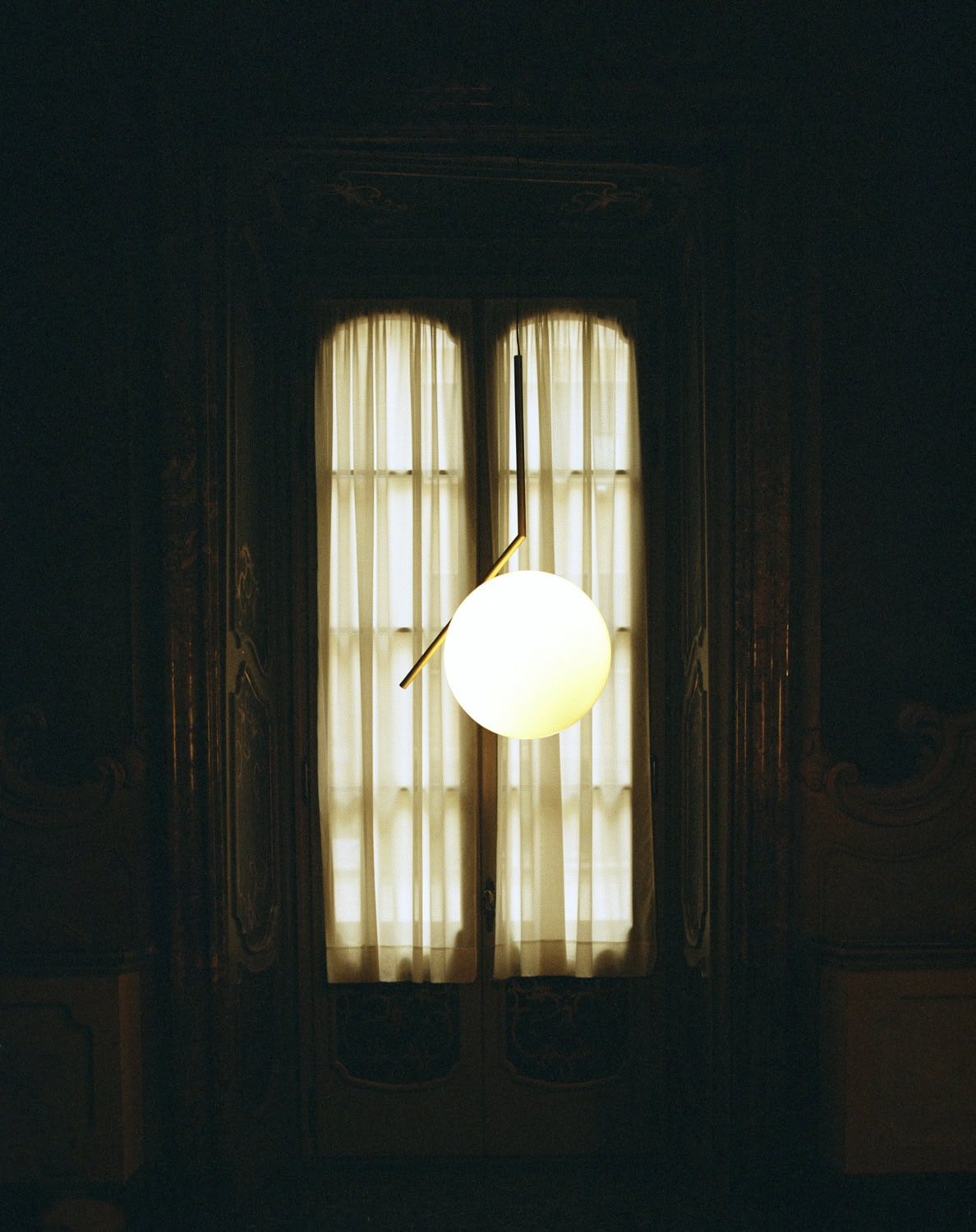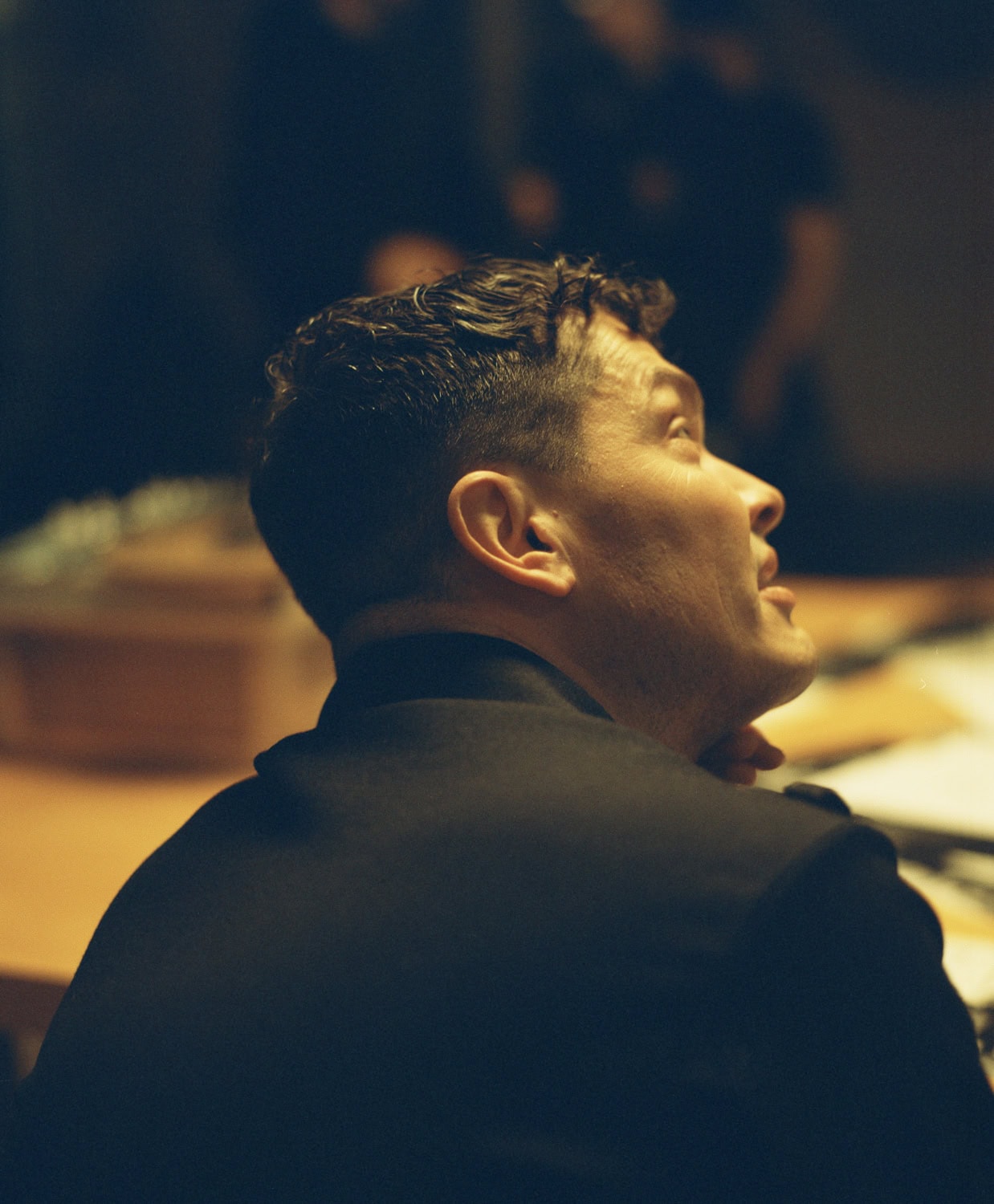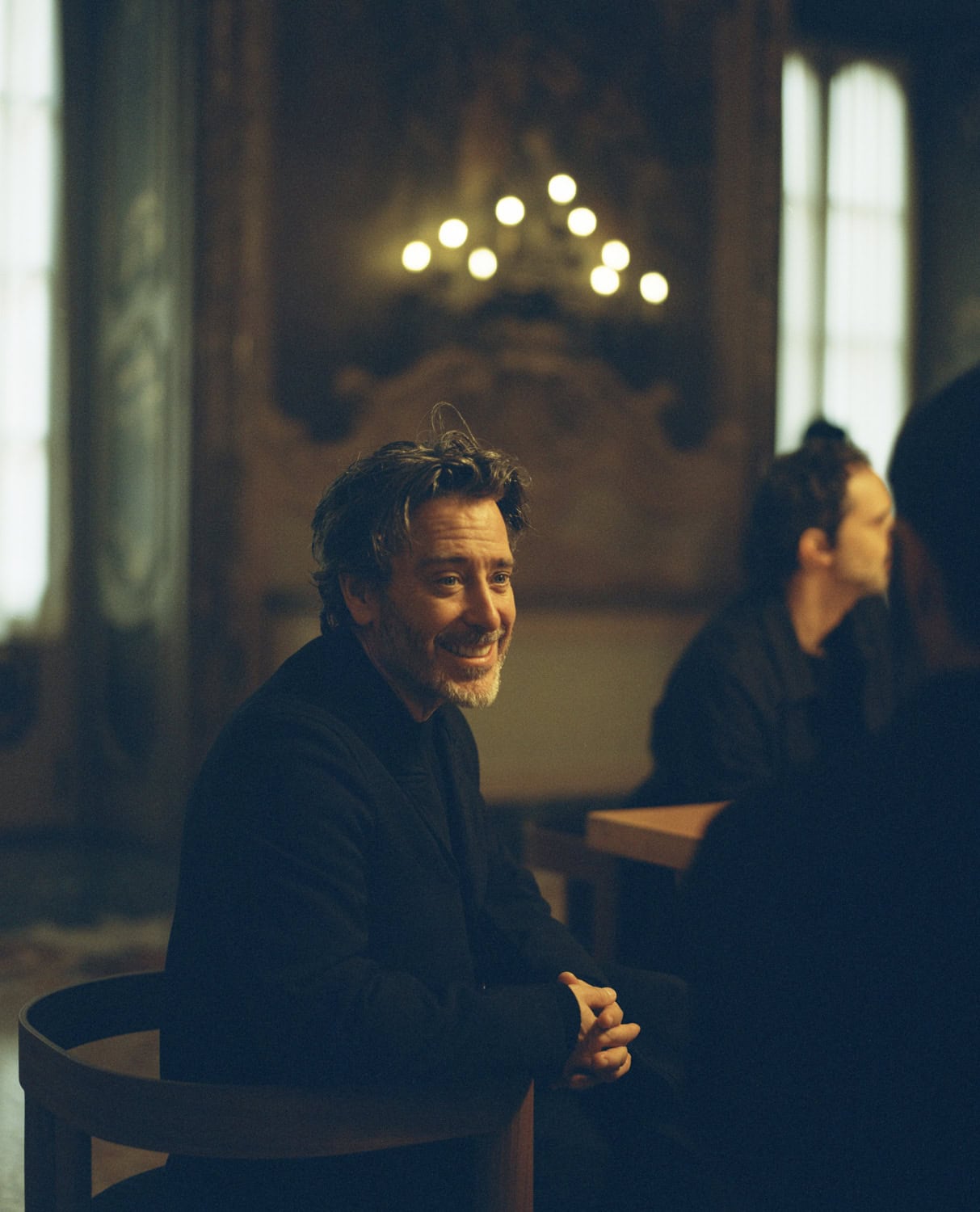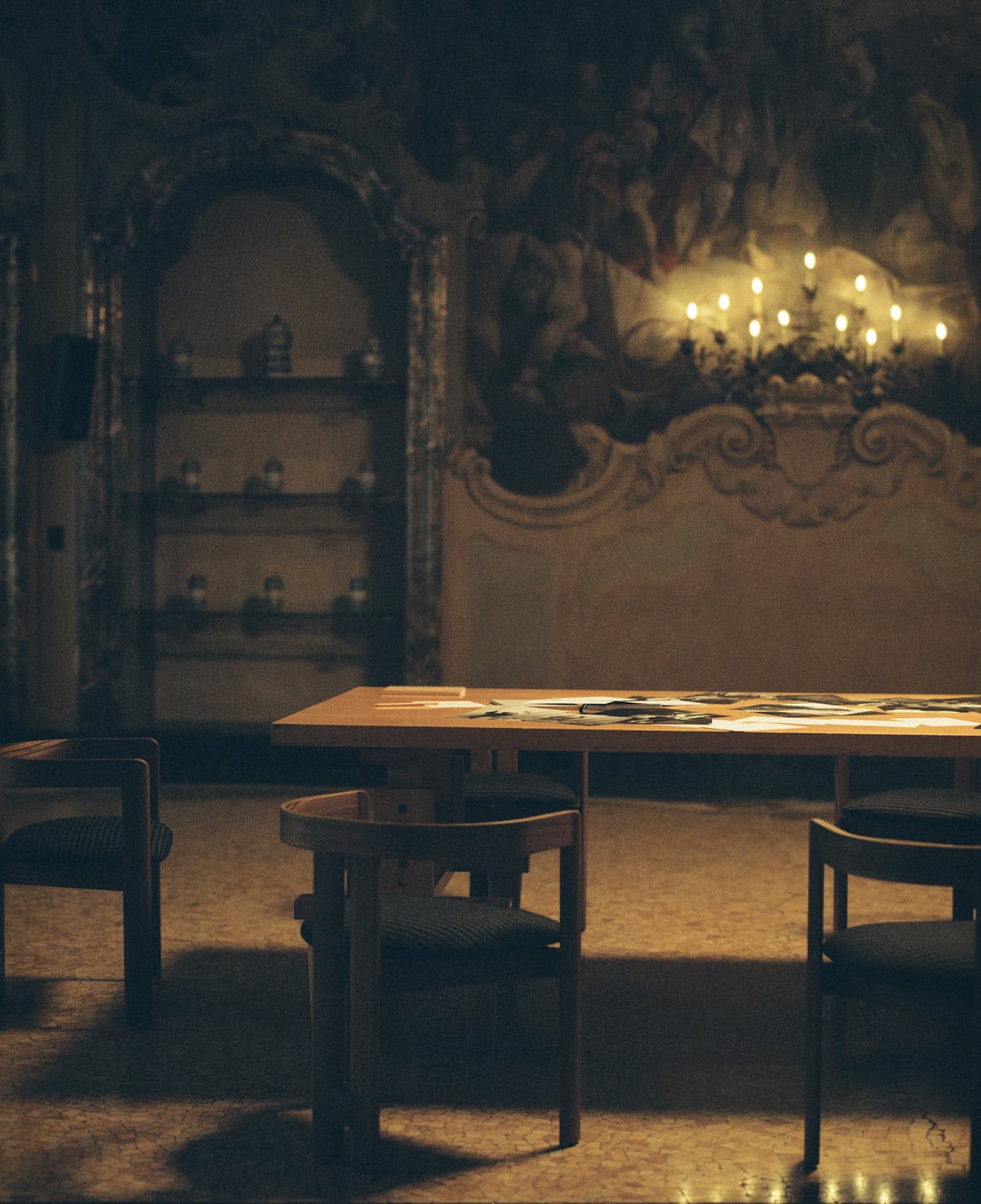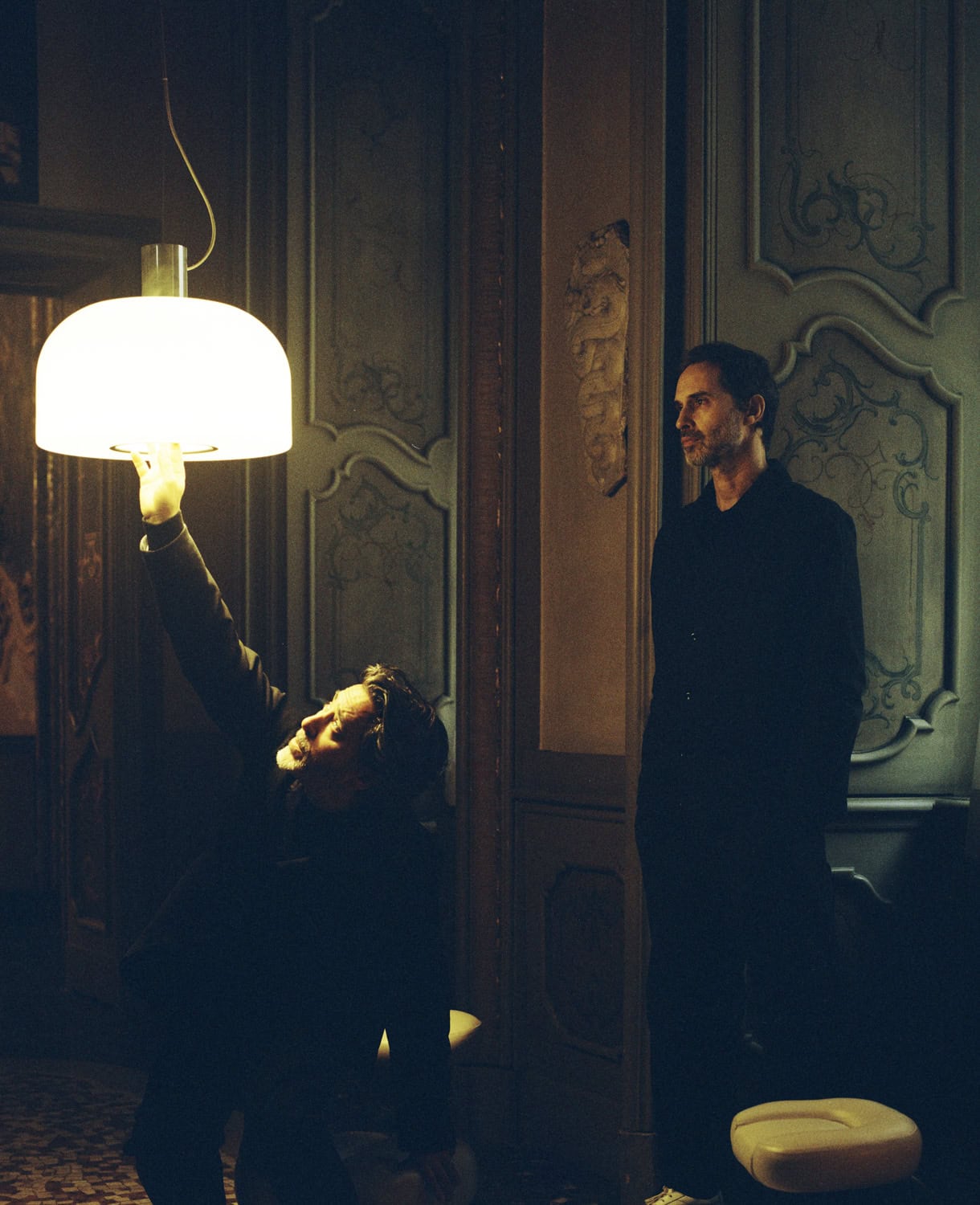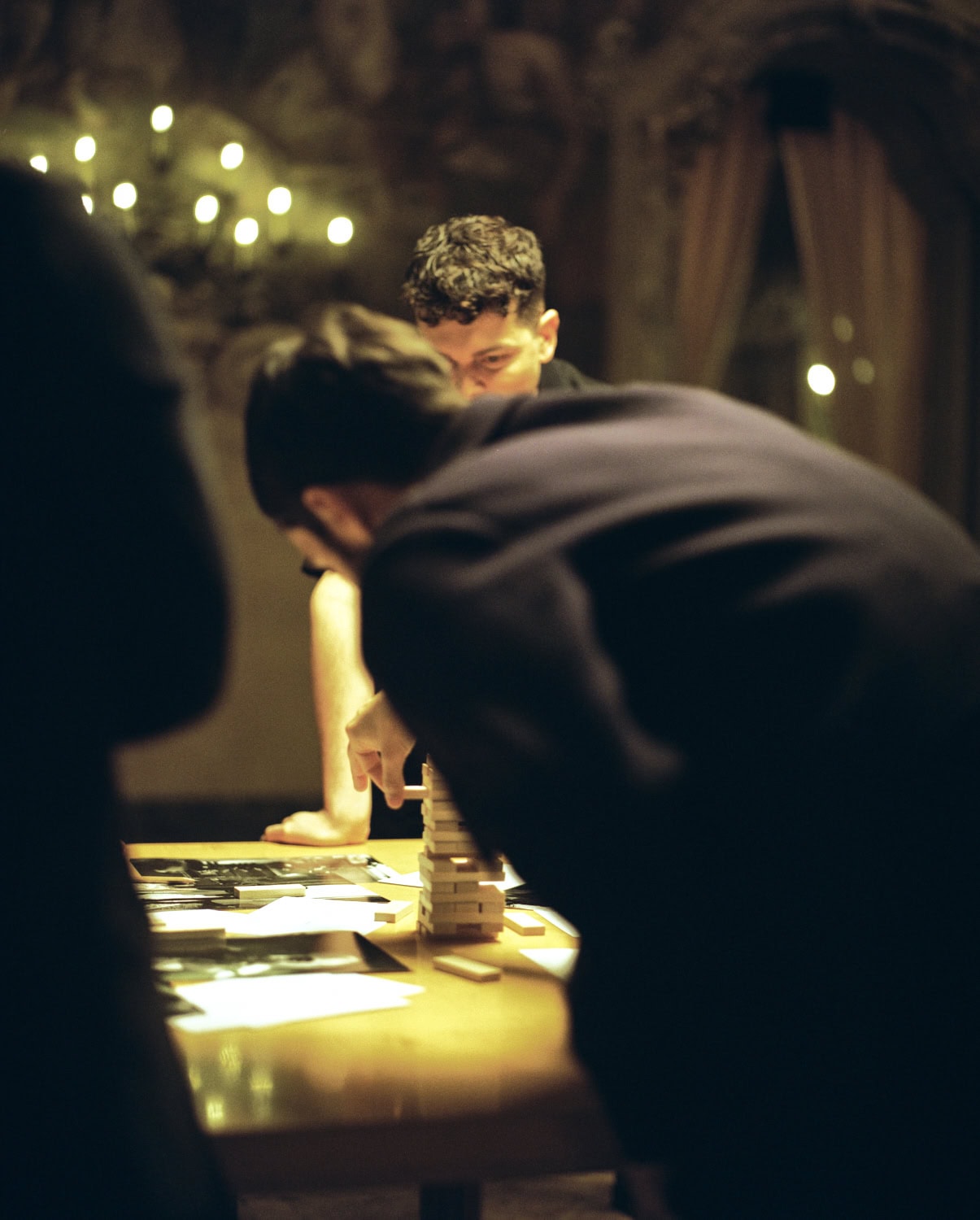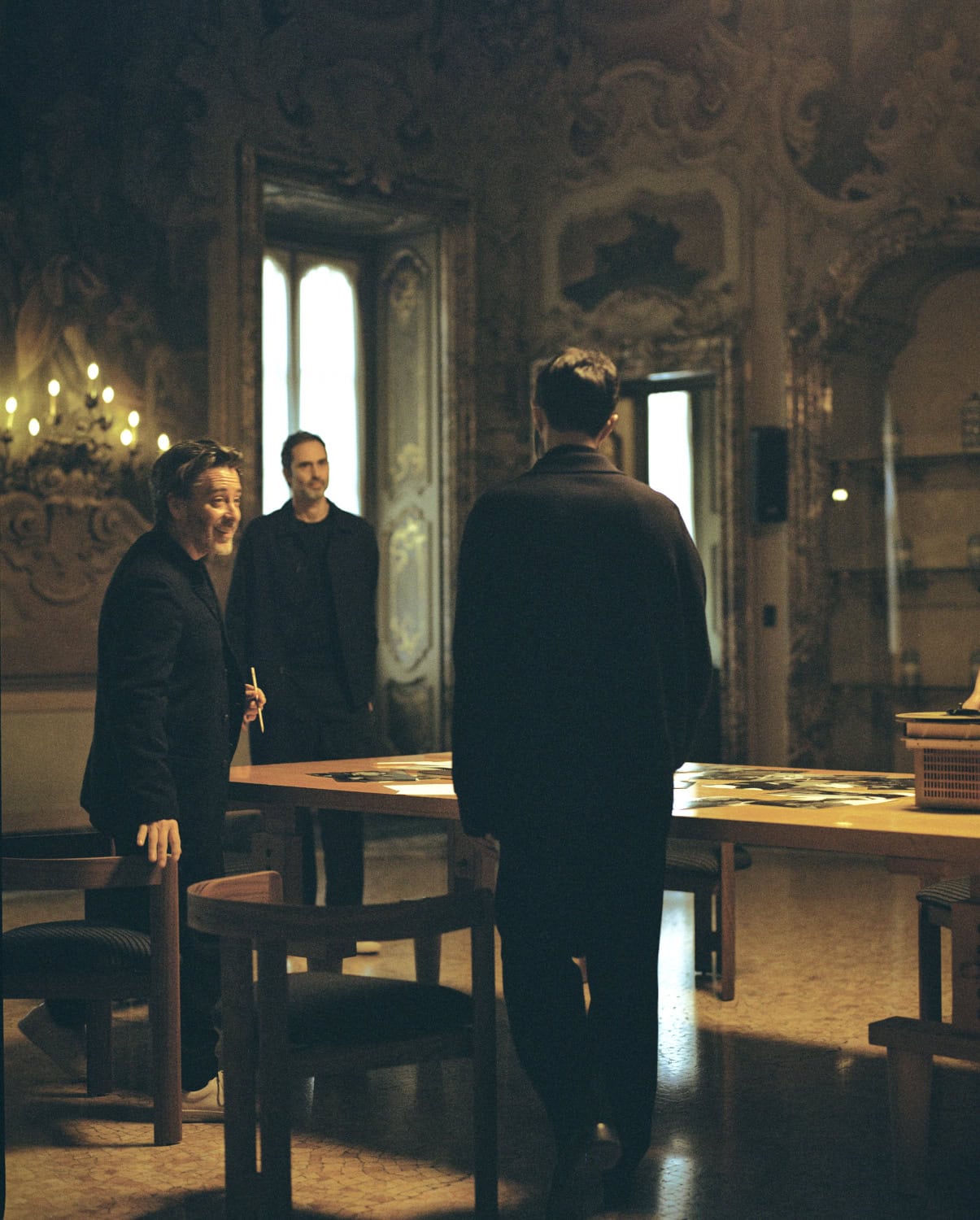Flos was established in 1962 with the belief that light could revolutionise people’s lives. In 1964, the company headquarters were moved from Merano to Brescia and, in partnership with Cassina, they embarked on the mission of introducing Flos to the international market. This vision became a reality in 1972 when Flos was featured in the exhibition “Italy, the New Domestic Landscape,” where iconic objects from Italian industry were selected and later became part of MoMA’s permanent collection. Relentless pursuit of innovative solutions, original forms, and experimentation with cutting-edge materials have always been at the core of Flos. In 1988, Flos presented Taraxacum 88 by Achille Castiglioni at Palazzo Visconti in Milan, together with the first lamp designed by Philippe Stack for Flos: Arà.
In January 2024, a group of renowned contemporary designers who have long collaborated with Flos were invited to Palazzo Visconti in Milan, Italy, for an engaging discussion. Michael Anastassiades, Barber Osgerby, and Formafantasma gathered in the palace’s hall to exchange ideas and share their experiences of distinct design approaches and practices.
Simone Farresin (Formafantasma): So, if you had to choose one sense to enhance with a superpower, which one would it be and why?
Michael Anastassiades: My hearing. I’m deaf, so I always wished I could hear better.
Edward Barber (Barber Osgerby): I would love to be able to fly.
Jay Osgerby (Barber Osgerby): That’s not a sense though.
EB (Barber Osgerby): I feel like it could become a sense.
JO (Barber Osgerby): That’s good. Well, I guess if we’re allowed to do anything, I would want to time travel.
SF (Formafantasma): Yes, that would be amazing.
JO (Barber Osgerby): Yes, that would be the best thing.
SF (Formafantasma): Which moment?
JO (Barber Osgerby): Backwards or forwards?
SF (Formafantasma): Backwards.
JO (Barber Osgerby): Definitely backwards. I don’t want to go forward. There are so many moments actually, I don’t know where I’d start. I’d like to be just like in a room like this, sort of through the ages, just wandering around invisibly, like a ghost, just watching people, listening to conversations and maybe, you know, just slightly interfering, moving something on a chessboard. You know, knocking something over in a different room, just pissing people off.
EB (Barber Osgerby): So you actually want to be a ghost?
JO: (Barber Osgerby): Yes.
SF (Formafantasma): Yes, or a vampire.
MA: But, would you want to change things that you did?
JO (Barber Osgerby): No, it’s too terrifying.
Andrea Trimarchi (Formafantasma): Well, for me, going back to the question “if you had to choose one sense to enhance with a superpower, which one would it be and why?” I’d choose smell because I’m very jealous of my little dog here that is always smelling and I can see that he’s thinking and understanding the world on a very different level. Smell is something that we don’t use so much. I think improving my sense of smell would be amazing.
JO (Barber Osgerby): And smell is also the sense with the longest memory, isn’t it?
SF (Formafantasma): Indeed.
AT (Formafantasma): So that’s like time traveling in a way.
SF (Formafantasma): I think dogs sense smell as information. Yes, as much as we see a bad landscape and we are not necessarily totally revolted by it.
MA: Well, my sense of smell is a lot higher to compensate for the hearing loss. But no, I mean, it’s true, but it’s a nightmare because when you’re in uncomfortable places where you’re not supposed to smell, you just have to go through it and pretend you’re not supposed to smell anything. It’s a nightmare. It’s not so pleasant. So trust me, you have to rethink that one, I think.
EB (Barber Osgerby): Okay, so next card? Another question.
MA: This one says: How strong do you feel your connection to your island when you’re not there?
AT (Formafantasma): Well, that must be. We are all from some islands except for Simone.
MA: It’s a metaphorical island.
JO (Barber Osgerby): Sorry, the question was how connected do you feel when you’re not there?
MA: Yes.
EB (Barber Osgerby): Not that connected, to be honest.
JO (Barber Osgerby): Well, you’re going to buy your own island, aren’t you?
EB (Barber Osgerby): Obviously. In one year, or two, maybe. But I don’t know. If you’re a designer from the UK, you actually spend more time outside the UK than there. Because there’s no manufacturing in the UK, so you’re always travelling.
MA: Did you live somewhere else?
EB (Barber Osgerby): Not for long periods of time but yes, in New York andthen Canada for a couple of years.
MA: Oh, could you?
EB (Barber Osgerby): Could I live somewhere else? Yes, easily. Definitely.
MA: Have you ever thought about moving out of London?
EB (Barber Osgerby): Definitely.
MA: Would you like to live in Italy?
EB (Barber Osgerby): Yes!
MA: Milan?
EB (Barber Osgerby): Not sure yet. My wife grew up here, she’s from Milan…
AT (Formafantasma): I do feel very connected to my island, and I miss a lot. I’m from Sicily, Italy.
EB (Barber Osgerby): Ah, yes.
AT (Formafantasma): It reconnects to my childhood, but there is something there that it’s frozen in time. When I go back there, everything feels the same all the time. Of course, it’s not. Everybody’s aging. You know, the volcanoes and beautiful beaches are a thing. Overall, I miss it a lot.
SF (Formafantasma): I’m so happy to live in Italy, actually, especially not having spent much time there lately. I’m just glad we’re back.
JO (Barber Osgerby): In my opinion, I think it’s easy to think of London as an island really within the country.
JO (Barber Osgerby): Okay. Last question. Ready? Who had the most impact on you growing up? Michael.
MA: Bingo…
SF (Formafantasma): Michael?
MA: It was probably this architect friend of my father, because he was probably the only or the first creative person I came across. Nobody in my family had anything to do with what I wanted to do or anything creative, so there was no encouragement on that side to cultivate that side of me. And so, I was really thirsty for any input whatsoever. I remember when my father met this modernist architect, he was recommended through a friend and he commissioned him eventually to build a house for him, in the village that he grew up in. So we started interacting with him and his wife and they were incredible people. He studied in the 1940s in Milan with Ponti and he was absolutely exceptional. His name was Neoptolemus Michaelides. A true visionary and really amazing, modernist architect.
EB (Barber Osgerby): It’s interesting what you say. I also come from a background where there was zero creativity. When in this situation, you always try to find someone to engage with to get that feeling that you’re looking for and I also had the same situation with my uncle who wasn’t creative, but he was fascinated in everything. He was interested in architecture and theatre and anything from nature. He wrote some books about insects. He taught me how to look at things. I suppose he was the one getting me interested in architecture but also at everyday things. He taught me to look at the world around me. And I guess that was the way in. So he is the person that definitely nurtured my inspiration
AT (Formafantasma): Well, for me that person is Simone.
SF (Formafantasma): I was about to say you.
AT (Formafantasma): Oh, good.
SF (Formafantasma): Well, we work together.
AT (Formafantasma): We met when I was 19 and we started as a couple and only then we became partners in crime in our job. I had people that shaped my inspiration before I met Simone. I think I really got into design and into the way we are working now because of the life we have together.
SF (Formafantasma): For us, it was also through education that we, this idea of collaboration was already there, because we studied in Florence, not in Milan. But the school, it was a small school, but it was very much affected by the culture of the radicals. They started in Florence. Like the Archizoom and these kind of people, they were all used to work together. So we were also encouraging working together. And we applied in Eindhoven together as a team. So we went through the examinations all the time together.
JO (Barber Osgerby): Ah, that’s interesting. For us it was the opposite. People didn’t get it at all. And even now, actually, the fact that we’re a duo makes people frown upon it. People understand duos in architecture, but not in design.
EB (Barber Osgerby): The thing that confuses people is how can two people work together for so long? How is that possible?
SF (Formafantasma): How is that confusing?
JO (Barber Osgerby): The thing is, we’re in a culture where any creative output is seen as singularity, genius from one person.
EB (Barber Osgerby): Anyways, you always need a partner somehow. You need a manufacturing partner for example, which makes you already part of a team.
AT (Formafantasma): Also in artistic practices, you need to have a producer and you need to have a team.
SF (Formafantasma): I find that’s really a 19th-century idea to think of creatives as geniuses.
AT (Formafantasma): Exactly, it’s a bit of an old-fashioned way of thinking about the creative person.
